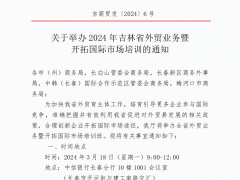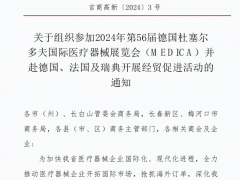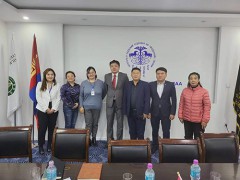
Investment-driven, infrastructure first, setting up special zones, attracting investment... Is today's Ethiopia learning from China's past development model?
Expected to get some degree of negative answer, but surprisingly, Ethiopia's ambassador to China Seyoum Mesfin (Seyoum Mesfin Gebredingle) told the 21st Century Business reporter after a short pause, "We want to develop, our country needs to change." The fact that China has lifted 600 million people out of poverty in 30 years is proof enough of the success of this model. Who else can we learn from but China?"
He stressed that China's help to Ethiopia is huge, not only through the construction of Bridges and roads to greatly improve the "hardware conditions", through the construction of industrial parks, industrial parks to form industrial agglomeration effect, but also to provide local technical support, personnel training, introduce the development experience of China's special economic zones, improve the "software conditions".
"From many perspectives, China and Ethiopia are models of China-Africa cooperation. We are willing to share experience with our African brothers to achieve common growth through the 'China model'." "Mesfin said.
"If you want to be rich, build roads first."
Ethiopia is a closed, landlocked country with no access to the sea and often lacks water and electricity. Since the 1990s, China has increased its infrastructure investment in Ethiopia. By the end of 2013, China's stock of direct investment in Ethiopia had reached 720 million U.S. dollars, and Chinese companies had signed a total of 22.4 billion U.S. dollars in contract value, with projects under construction totaling more than 15 billion U.S. dollars. For many years in a row, China has been Ethiopia's trading partner, main source of foreign investment and project contractor.
China's then ambassador to Ethiopia, Xie Xiaoyan, wrote in a 2014 article that more than 90 percent of Ethiopia's roads, the country's communications network, a railway and urban light rail, wind farms and several important hydropower plants were built or participated in by Chinese companies. Mesfin revealed that most of the projects that Chinese enterprises currently participate in adopt the EPC model, and the Ethiopian government will gradually increase BOT and PPP projects.
Currently, the anticipated infrastructure project is an 850 km electrified railway from Addis Ababa to Djibouti City, the capital of Djibouti. "Before June this year, we will hold a ceremony for the opening of the railway, which will be attended by senior officials from both countries." "Mesfin said. This is a transnational railway built by Chinese enterprises in Africa in the new historical period of China-Africa cooperation.
A representative of a Chinese enterprise growing vegetables in Ethiopia told the 21st Century Business Herald that it takes five or six days to transport from Addis Ababa to Djibouti generally by road, and after the opening of the railway, the time will be shortened to seven or eight hours. This is great news for produce that needs to stay fresh. To make the line more profitable, the two governments have decided to start building industrial parks along the route immediately after it opens, according to Mesfin.
In addition, as a net importer of crude oil, Ethiopia has been facing energy supply problems. At present, the joint venture company formed by Poly Group and GCL Group is investing in the development of the Ethiopian-Djibouti oil and gas project. The whole project includes four parts: exploration and development of oil and gas in Ethiopia and pipeline laying, and construction of LNG plant and terminal in Djibouti. The produced oil and gas are transported from Ethiopia to Djibouti through pipelines for liquefaction processing and then shipped back to China.
The project consists of two development blocks and eight exploration blocks with a total area of nearly 120,000 square kilometers and a contract period of 43 years. It is estimated that the development of large recoverable reserves of natural gas will help China to diversify its energy supply. The project is expected to start construction at the end of 2016 and be completed and put into operation in early 2019.
The industrialization construction in full swing
"China has long been an important development partner of Ethiopia. We are moving from an agricultural economy to industrialization, and we look forward to strengthening cooperation with China in the field of production capacity." Mesfin stressed that such cooperation is win-win, driving Ethiopia's growth and increasing employment on the one hand, and transferring China's excess capacity on the other.
"Thanks to the fact that we moved some of our industries to Ethiopia ahead of schedule, otherwise it would have been a huge shock." Huajian Group president special assistant Li Weimin to the 21st century Business Herald reporter said. His company is mainly engaged in the production of mid-range leather women's shoes, headquartered in Dongguan. In November 2011, Huajian started to build a new production base in Ethiopia's East Industrial Park.
"At the beginning, many people were opposed to traveling thousands of miles to build a factory in Ethiopia. In fact, until 2012, the domestic market was very good, and we also paid 200 million yuan in domestic taxes that year. But in 2013, things took a turn for the worse." Li Weimin pointed out that the "migratory bird industry" such as shoe manufacturing is highly sensitive to labor costs, and now the domestic labor-intensive industry has basically come to an end.
He gave the reporter an account, now, the wage cost of domestic workers is 2000-3000 yuan, local only 300-500 yuan. The working week in Ethiopia is six days and eight hours, and the national holidays are 13 days. Regular overtime is calculated at 1.25 times, night overtime is calculated at 1.5 times, Sunday overtime is calculated at 2 times, and national holiday overtime is calculated at 2.5 times. In terms of welfare expenditure, the current mandatory provision is pension insurance, and the company bears part of it according to the basic salary.
On the tax front, Ethiopia is also an attractive destination for local companies exporting to Europe and the US - taking advantage of the US Growth and Opportunity in Africa policy and the EU's Comprehensive Preferential Arrangements other than Arms, which offer duty-free and quota-free access. "If you import our shoes from China, you have to pay a 37 percent tariff, and if you import them from Ethiopia, you don't have to pay a tariff."
At present, Huajian has 4,200 local employees, 6 production lines and shoe material factories in Ethiopia, and exports 2.4 million pairs of women's shoes annually, with an average profit margin of 10% and a profit of 15 million yuan in 2015. Li Weimin said.
In order to further expand the industry, Huajian plans to build an industrial park in Addis Ababa to focus on light industrial manufacturing such as clothing, shoes and hats, and electronics. Li Weimin said, "The total investment of 400 million US dollars, the end of 2016 can be completed 80,000 square meters of plant." The project will be fully completed by 2020."
 Customer service hotline:
Customer service hotline:



